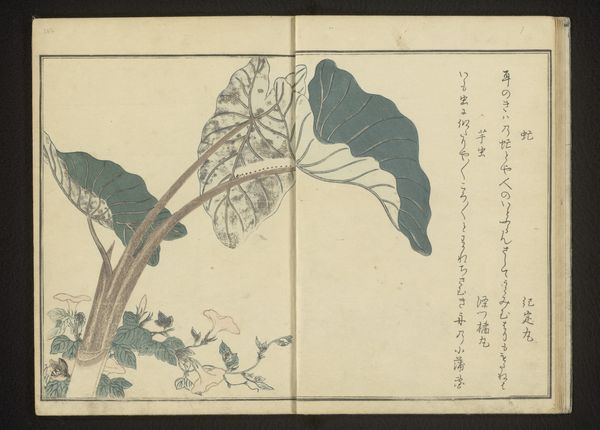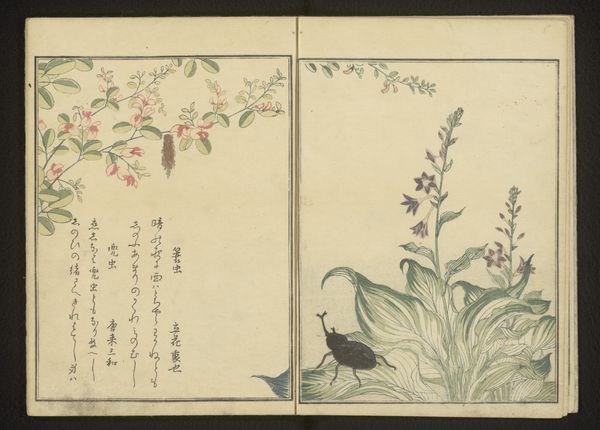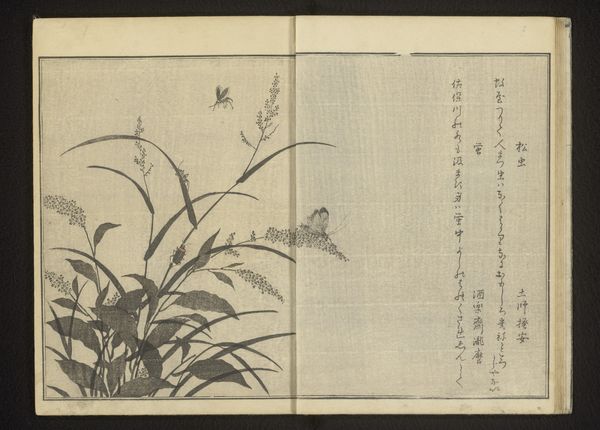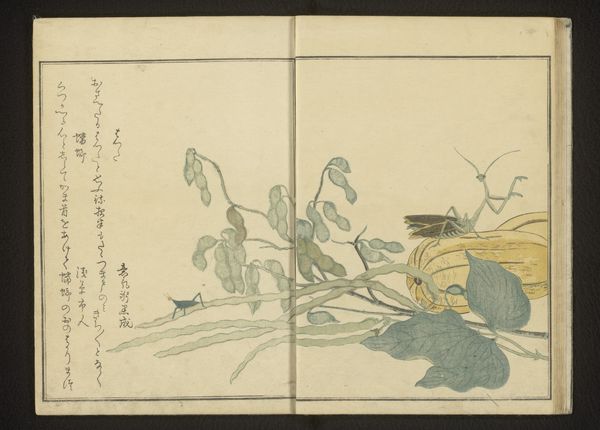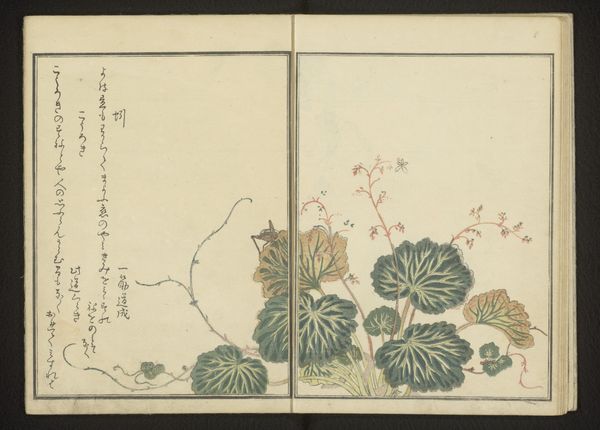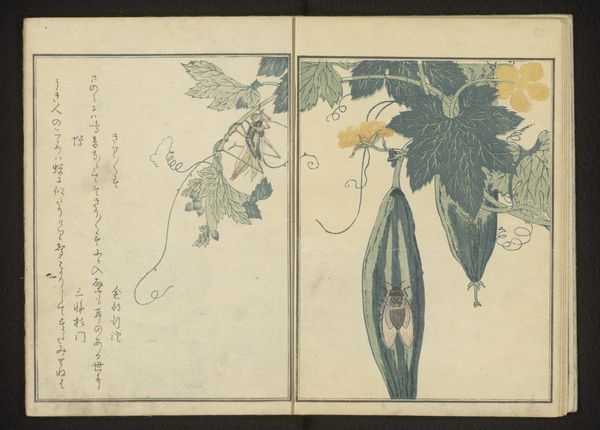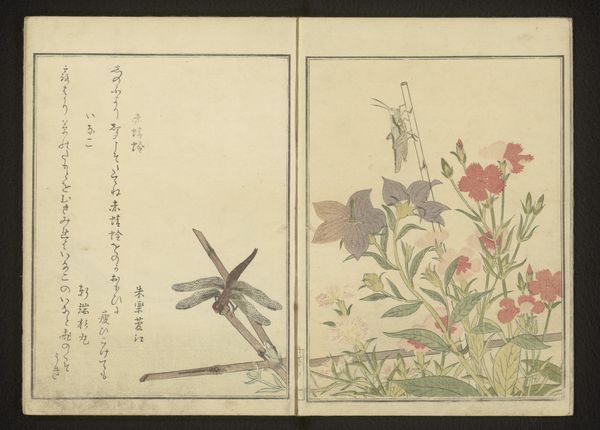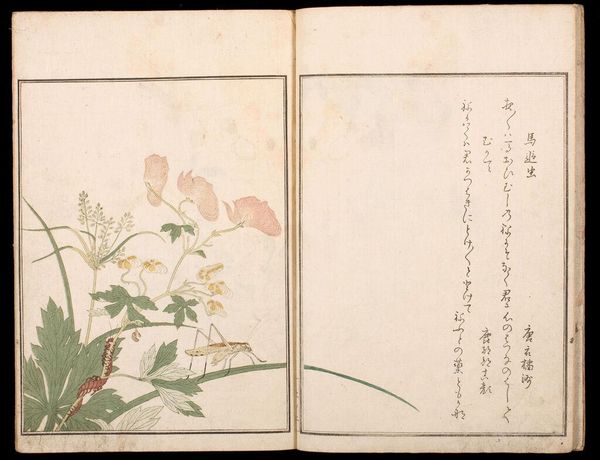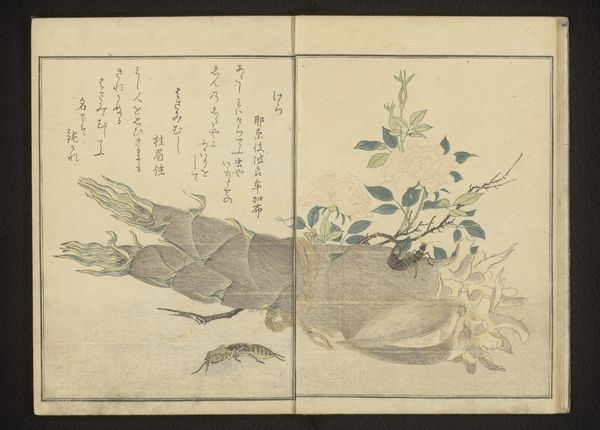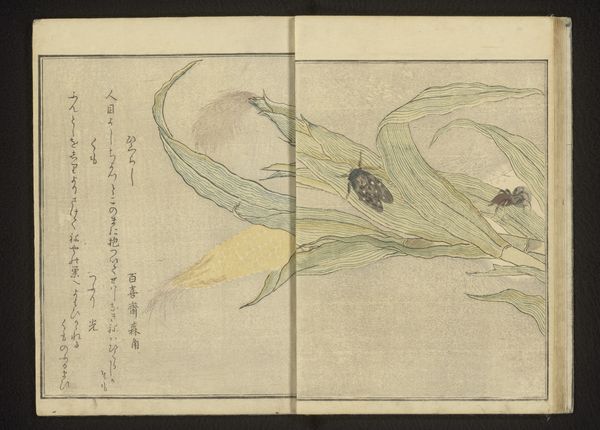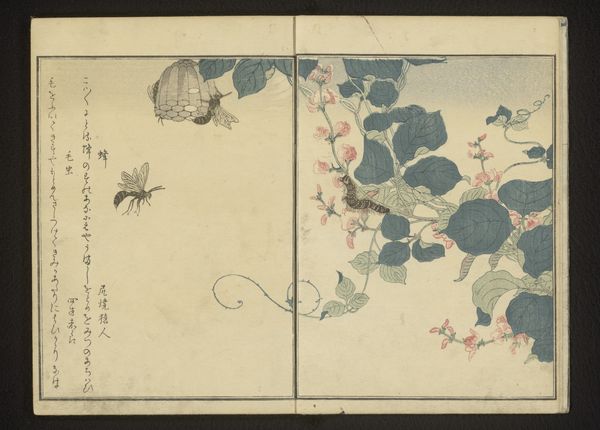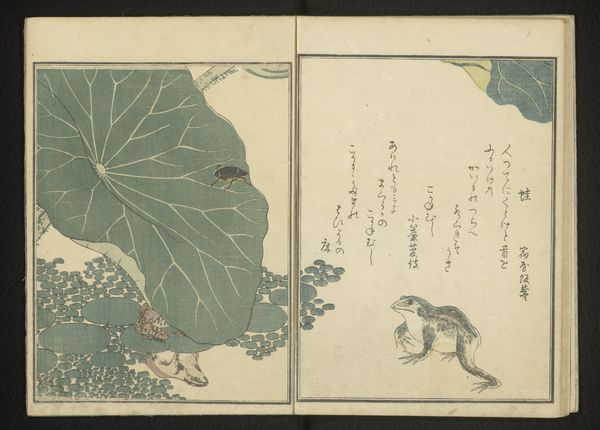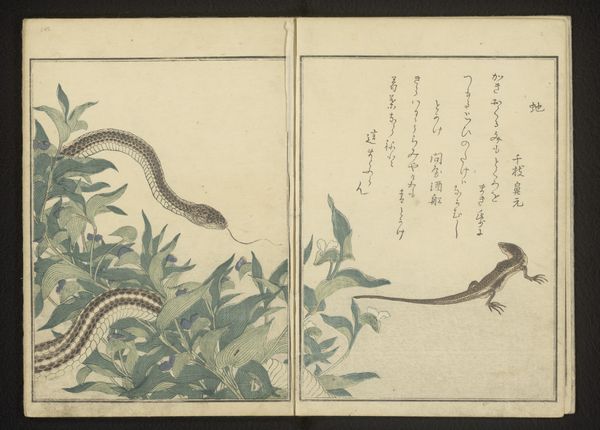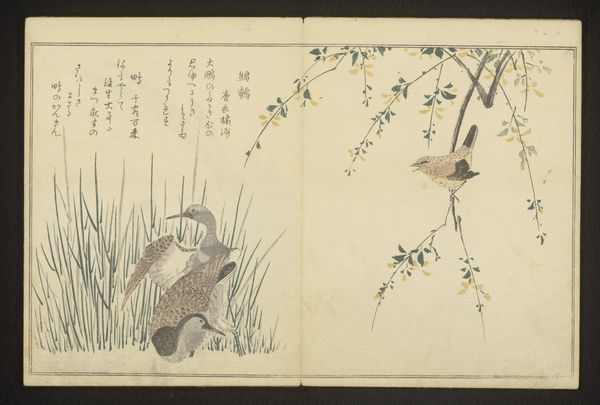
drawing, print, paper, ink
#
drawing
#
narrative-art
# print
#
asian-art
#
ukiyo-e
#
figuration
#
paper
#
ink
#
orientalism
Dimensions: height 250 mm, width 180 mm
Copyright: Rijks Museum: Open Domain
Curator: Oh, I’m just drawn into the hushed world Utamaro creates in this work. He painted this drawing on paper with ink in 1788. It’s entitled "Grasshopper and centipede on aconite plant," and currently it resides at the Rijksmuseum. Editor: My first thought? Dangerously beautiful! The botanical illustration feels so delicate, almost clinical, yet there's something lurking with the centipede that brings about feelings of threat. Curator: Threat, exactly! It's a whisper of mortality amidst the flowers. Utamaro often played with those contrasts, didn't he? Editor: Absolutely. You see it so clearly in the positioning. Aconite is poisonous, after all, and was frequently used in traditional medicine—a cure and a cause for harm existing simultaneously. It challenges our binary understanding of the natural world. Curator: And isn’t that something so typically Asian? What’s often considered the East and West has traditionally been the dichotomy between life and death but also natural life is respected regardless of threat. Look at the ink washes, so faint, like fleeting moments... as if existence is nothing but these delicate lines. The figures almost disappear in pale colours against a soft cream tone in the background. It's that transience that hits you right in the soul. Editor: It makes you question what narratives we attach to harmless figures such as a flower, a harmless insect. The way Utamaro has balanced these insects together. They’re normally cast as harmful because of their multi-legged figures, but on closer inspection it is an attempt to highlight the natural order of co-existence. They become vulnerable to us in this painting, and their relationship as predators or equals almost humanizes them to an almost satirical gaze in a world of systemic, societal hierarchies. Curator: Systemic societal hierarchies, indeed. I find myself wondering about those unsaid conversations Utamaro may have wished to express in this print between men, women, children and the power each have over each other. But looking closely, each form feels so intentionally placed on the leaf of the plant and placed with grace. This makes me appreciate Utamaro’s choice in featuring the common lifeform more deeply! Editor: Ultimately, it's this intersection of danger, beauty, and societal reflection that makes Utamaro's work so incredibly potent and contemporary. We should question the relationships in front of us.
Comments
No comments
Be the first to comment and join the conversation on the ultimate creative platform.
